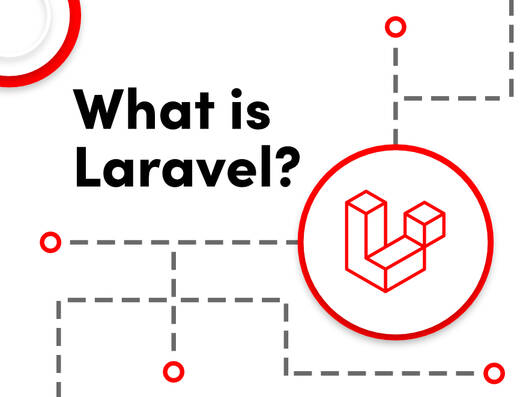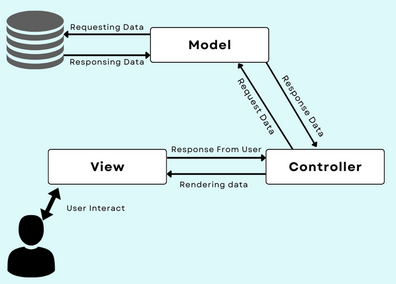Upgrade & Secure Your Future with DevOps, SRE, DevSecOps, MLOps!
We spend hours on Instagram and YouTube and waste money on coffee and fast food, but won’t spend 30 minutes a day learning skills to boost our careers.
Master in DevOps, SRE, DevSecOps & MLOps!
Learn from Guru Rajesh Kumar and double your salary in just one year.
What is Laravel?

Laravel is a free and open-source PHP web framework, created by Taylor Otwell and intended for the development of web applications following the model–view–controller (MVC) architectural pattern and based on Symfony.
Some of the features of Laravel are:
- A modular packaging system with a dedicated dependency manager, different ways for accessing relational databases, utilities that aid in application deployment and maintenance, and its orientation toward syntactic sugar.
- A powerful command-line interface (CLI) called Artisan, which can be used to generate new code, migrate databases, and perform other tasks.
- A well-documented API that makes it easy to learn and use.
- A large and active community of developers who can provide support and help with problems.
What is top use cases of Laravel?
Laravel is a popular PHP framework that can be used to develop a wide variety of web applications. Here are some of the top use cases of Laravel:
- E-commerce websites: Laravel is a great choice for developing e-commerce websites because it is scalable and secure. Laravel also provides a number of features that are specifically designed for e-commerce websites, such as the ability to create product catalogs, manage orders, and process payments.
- Content management systems (CMS): Laravel can be used to develop custom CMSs or to extend existing CMSs. Laravel’s MVC architecture makes it easy to create a modular and extensible CMS.
- Social media applications: Laravel is a good choice for developing social media applications because it is scalable and efficient. Laravel also provides a number of features that are specifically designed for social media applications, such as the ability to handle large amounts of data and to scale to meet demand.
- APIs: Laravel can be used to develop APIs for a variety of purposes, such as connecting different systems, providing data to third-party applications, or creating a public-facing API for your application. Laravel’s API features make it easy to create secure and scalable APIs.
- Enterprise applications: Laravel is a good choice for developing enterprise applications because it is scalable, secure, and well-documented. Laravel’s features make it easy to create complex applications that meet the needs of large organizations.
What are the features of Laravel?
Laravel is a popular PHP framework that offers a wide range of features that make it a great choice for developing web applications.
Here are some of the most important features of Laravel:
- MVC architecture: Laravel follows the Model-View-Controller (MVC) architectural pattern, which separates the application into three layers: the model, the view, and the controller. This makes the application code more organized and easier to maintain.
- Routing: Laravel provides a powerful routing system that makes it easy to define and map URLs to controller actions. This makes it easy to create complex applications with a large number of URLs.
- Eloquent ORM: Laravel includes an Eloquent ORM that makes it easy to interact with databases. The Eloquent ORM provides a fluent interface that makes it easy to create, read, update, and delete data from databases.
- Artisan CLI: Laravel includes a powerful command-line interface (CLI) called Artisan that can be used to generate new code, migrate databases, and perform other tasks. The Artisan CLI makes it easy to automate tasks and speed up development.
- Security: Laravel includes a number of features that make it a secure framework, such as input validation, password hashing, and CSRF protection. These features help to protect your application from common security vulnerabilities.
- Testing: Laravel includes a built-in testing framework that makes it easy to test your application. The testing framework provides a number of tools and features that help you to write and run tests quickly and easily.
- Documentation: Laravel has excellent documentation that makes it easy to learn and use the framework. The documentation is well-written and comprehensive, and it includes examples and tutorials that can help you get started.
- Community: Laravel has a large and active community of developers who are always willing to help with problems and answer questions. This community is a great resource for learning Laravel and getting help when you need it.
What is the workflow of Laravel?
The workflow of Laravel is a process that is used to develop web applications using the Laravel framework. The workflow is divided into the following steps:
- Routing: The first step is to define the routes for your application. Routes are used to map URLs to controller actions. This is done using the Laravel routing system.
- Controllers: Controllers are responsible for handling requests from the user. They are responsible for calling the appropriate model methods and rendering the appropriate view.
- Models: Models are responsible for interacting with the database. They provide a layer of abstraction between the application and the database.
- Views: Views are responsible for displaying the data to the user. They are typically rendered by the controller.
- Testing: Testing is an essential part of the Laravel workflow. Laravel includes a built-in testing framework that makes it easy to write and run tests.
How Laravel Works & Architecture?

Laravel is a popular PHP framework that follows the Model-View-Controller (MVC) architectural pattern. The MVC pattern divides the application into three layers:
- The Model layer: The model layer is responsible for interacting with the database. It provides a layer of abstraction between the application and the database.
- The View layer: The view layer is responsible for displaying the data to the user. It is typically written in Blade, which is a templating language that is designed for Laravel.
- The Controller layer: The controller layer is responsible for handling requests from the user. It is responsible for calling the appropriate model methods and rendering the appropriate view.
How to Install and Configure Laravel?
Here are the steps on how to install and configure Laravel:
1. Install Composer. Composer is a dependency manager for PHP. You can download Composer from the Composer website.
2. Install Laravel. You can install Laravel using Composer. To do this, run the following command in your terminal:
composer create-project --prefer-dist laravel/laravel my-appThis will create a new Laravel application called my app.
3. Configure the application. You need to configure the application before you can start using it. The configuration file is located at config/app.php. In this file, you can set the application name, the database connection details, and other settings.
4. Generate a key. Laravel uses a key to encrypt sensitive data. You can generate a key using the following command:
php artisan key:generate5. Start the development server. Laravel includes a built-in development server that you can use to test your application. To start the development server, run the following command:
php artisan serve